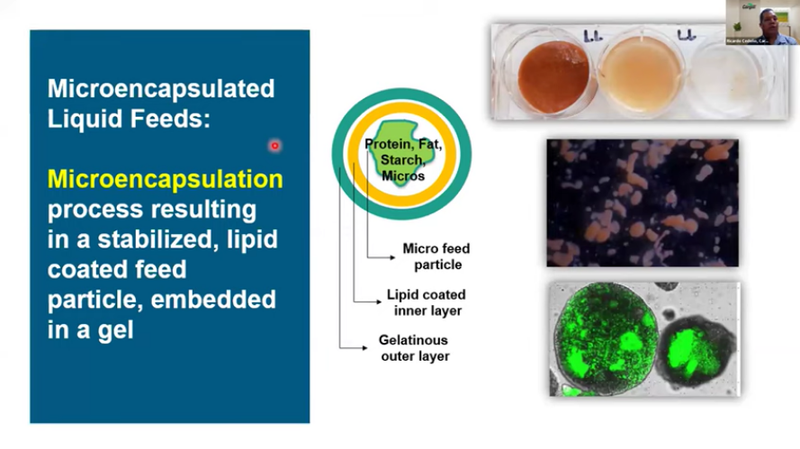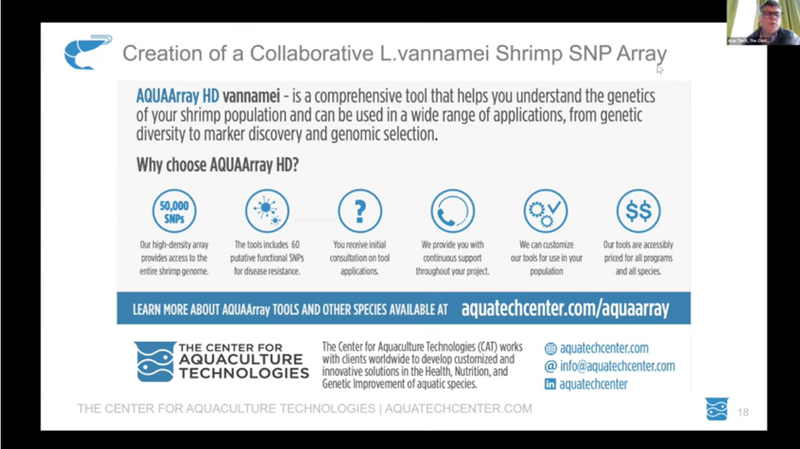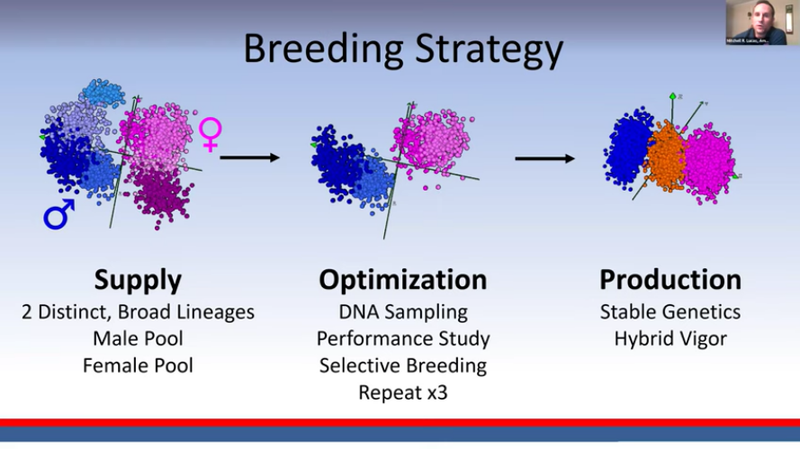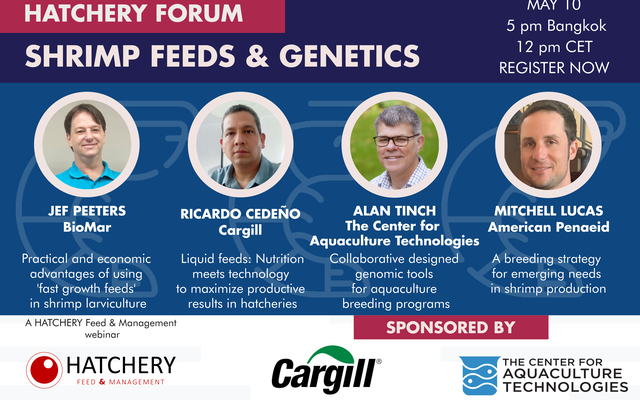Fast growth feeds, liquid feeds, genomic tools and breeding strategies were presented in the second shrimp session of the World Hatchery Forum. The forum focused on practical solutions for aquaculture hatchery managers.
The second shrimp session was sponsored by Cargill and The Center for Aquaculture Technologies.
Fast growth feeds
Jef Peeters, global shrimp hatchery and nursery products manager at BioMar, presented the latest results on BioMar’s Fast Growth Feeds strategy. It combines genetics, management and nutrition.
The first trials were presented in a webinar part of the 2021 series Trends in aquaculture hatcheries. A year later, an increasing number of hatcheries in Ecuador are using fast-growth feeds, Peeters said.
Apart from the faster growth, fast growth feeds lead to higher health performance, less fouling, higher molt frequencies and cleaner larvae. The robustness of PLs is higher with better performance in the salinity stress test. These results translate into shorter cycles and more cycles per year, a reduction in size variation, a higher PL price and a predictable production thanks to the higher resistance and survival to stress and diseases. Fast growth feeds also have an impact at the nursery and farm level with better growth and survival potential in nursery and grow-out.
For more details, watch the presentation here.

Liquid feeds
Microencapsulation technology is a technology of packaging solids or liquids that allows manufacturing particles in a range from 1-1,000 µm. Ricardo Cedeño, specialist in shrimp farms at Cargill, presented on how Cargill implemented the use of this technology in the formulation of liquid feeds for shrimp more than 25 years ago resulting in a stabilized, lipid-coated feed particle, embedded in a gel.
Microencapsulated liquid feeds eliminate leaching and increase feed availability. With liquid feeds, Ricardo said that the production processes are simplified since the number of feeds used is reduced. A traditional feed protocol involves up to 12 different diets for the entire cycle and with liquid feeds, it can be reduced to three.
Ricardo also presented some trial results showing improved water quality with decreased total ammonia, higher survival rates and increased weight when compared to traditional feeds. For more details on these trial results, watch Ricardo’s presentation here.

Genomic tools to maximize shrimp efficiency
“Aquatic breeding programs need to be efficient and learn from terrestrial species to develop technologies in efficient ways,” said Alan Tinch, VP of Genetics at the Center for Aquaculture Technologies.
To build a shrimp breeding program, there are several tools available to make predictions on particular traits, inbreeding control, sib selection for selection of broodstock, etc. For the shrimp industry, the center developed AQUAArray HD vannamei, a comprehensive tool that helps understand the genetics of farmers’ shrimp population and can be used in a wide range of applications, from genetic diversity to marker discovery and genomic selection. The center brings together material from the main shrimp markets and developed a set of markers that can be used to characterize inbreeding and relatedness, parental assignment, GWAs and genome selection. They have been used in major shrimp-producing countries.
Watch Alan’s presentation here for more information on the center’s tools for shrimp breeding.

Breeding strategy for emergency needs in shrimp production
American Penaeid is one of the few genetics companies that has built its own genetics lab. Mitchell Lucas, lead geneticist for American Penaeid, presented the company’s breeding strategy to develop its commercial shrimp lines.
The company owns its own germoplasm and is able to supply animals. The lab allows the company to have organized genetics (families, lineages, etc.) and supply broad lineages (male and female pool) to the grow-out environment. Over the course of a few years, the company performs DNA sampling and selectively breeds them to produce stable parents.
One commercial product that has come out of this breeding strategy is its APIs Dragon Line.
For more information, watch Mitchell's presentation here.














